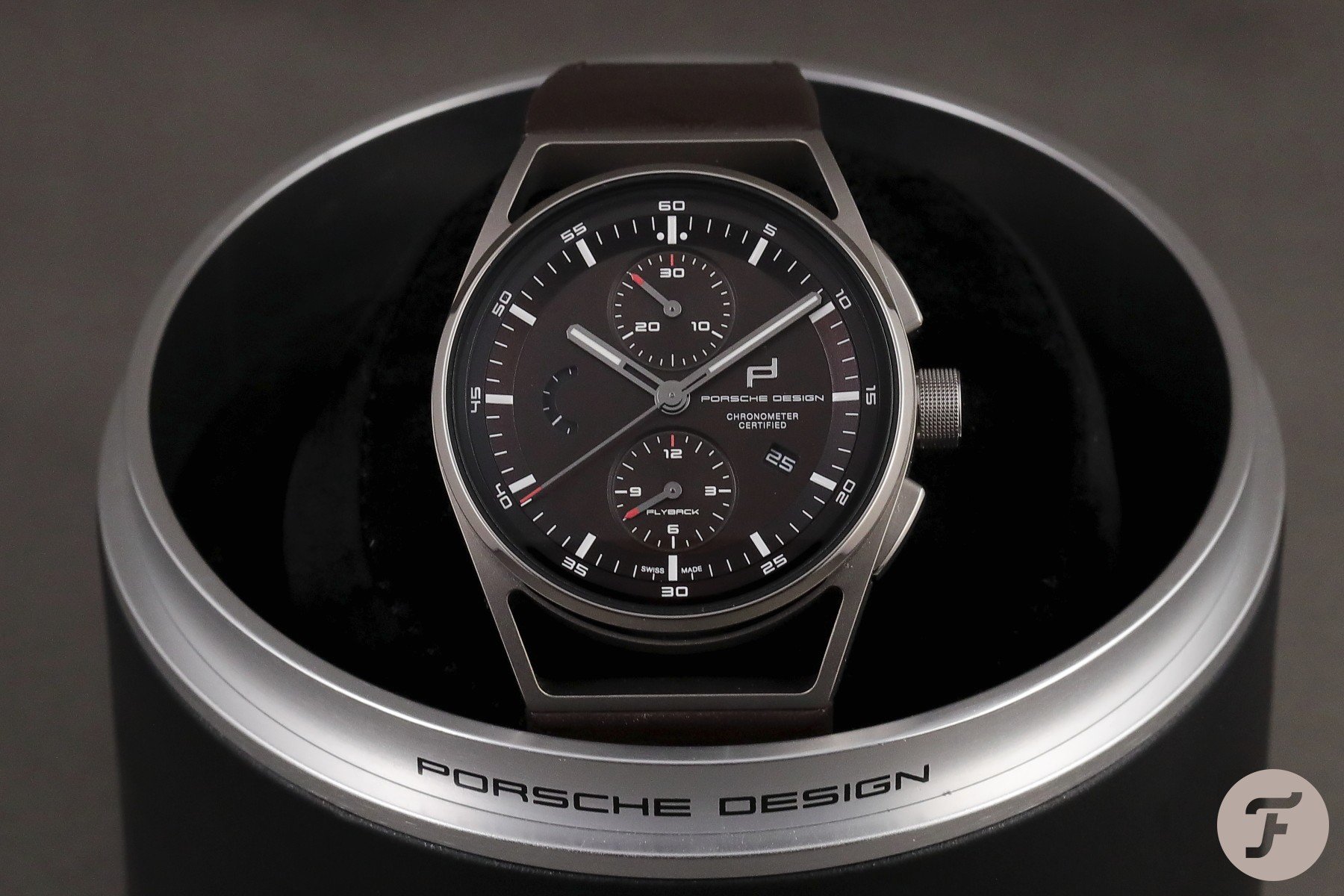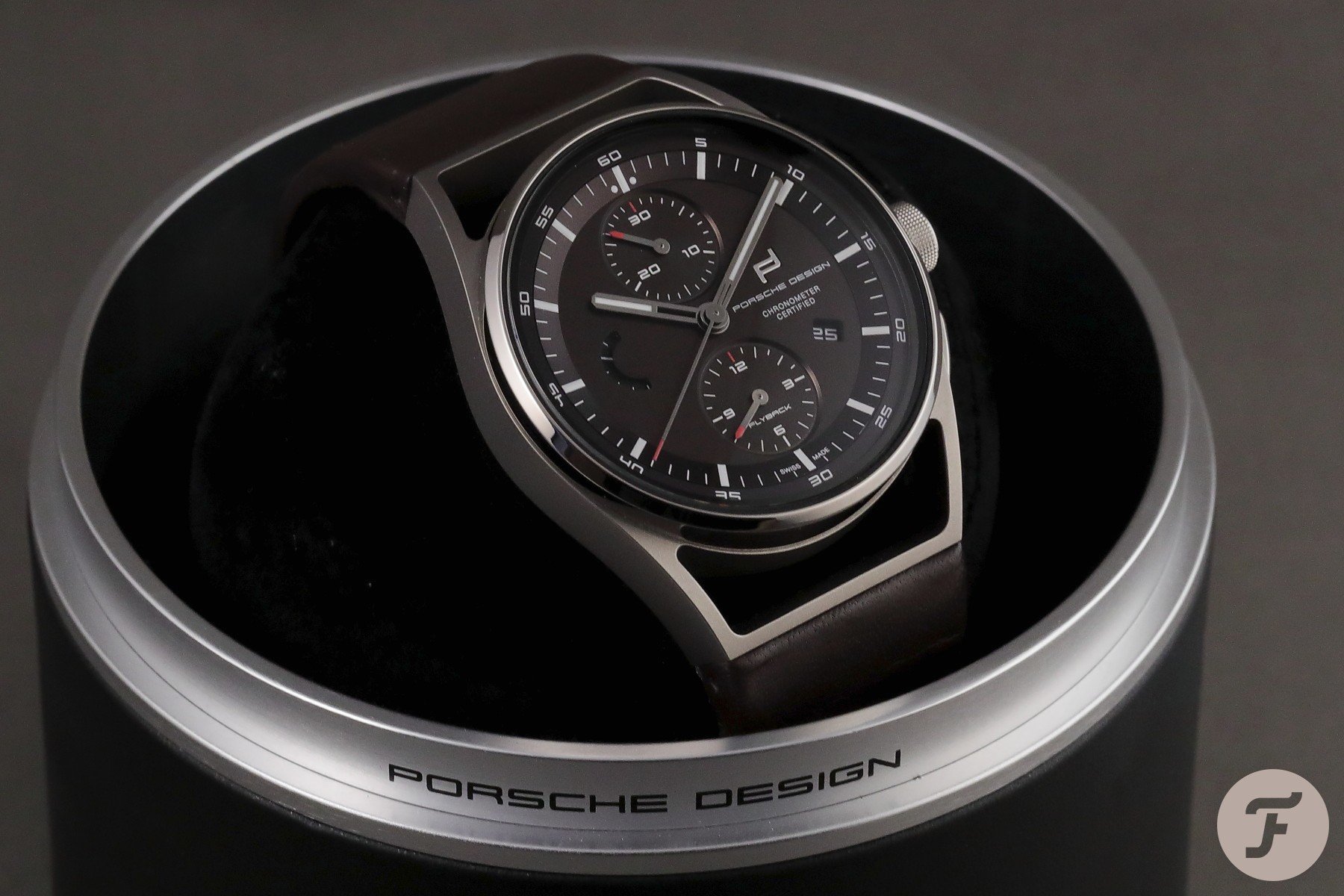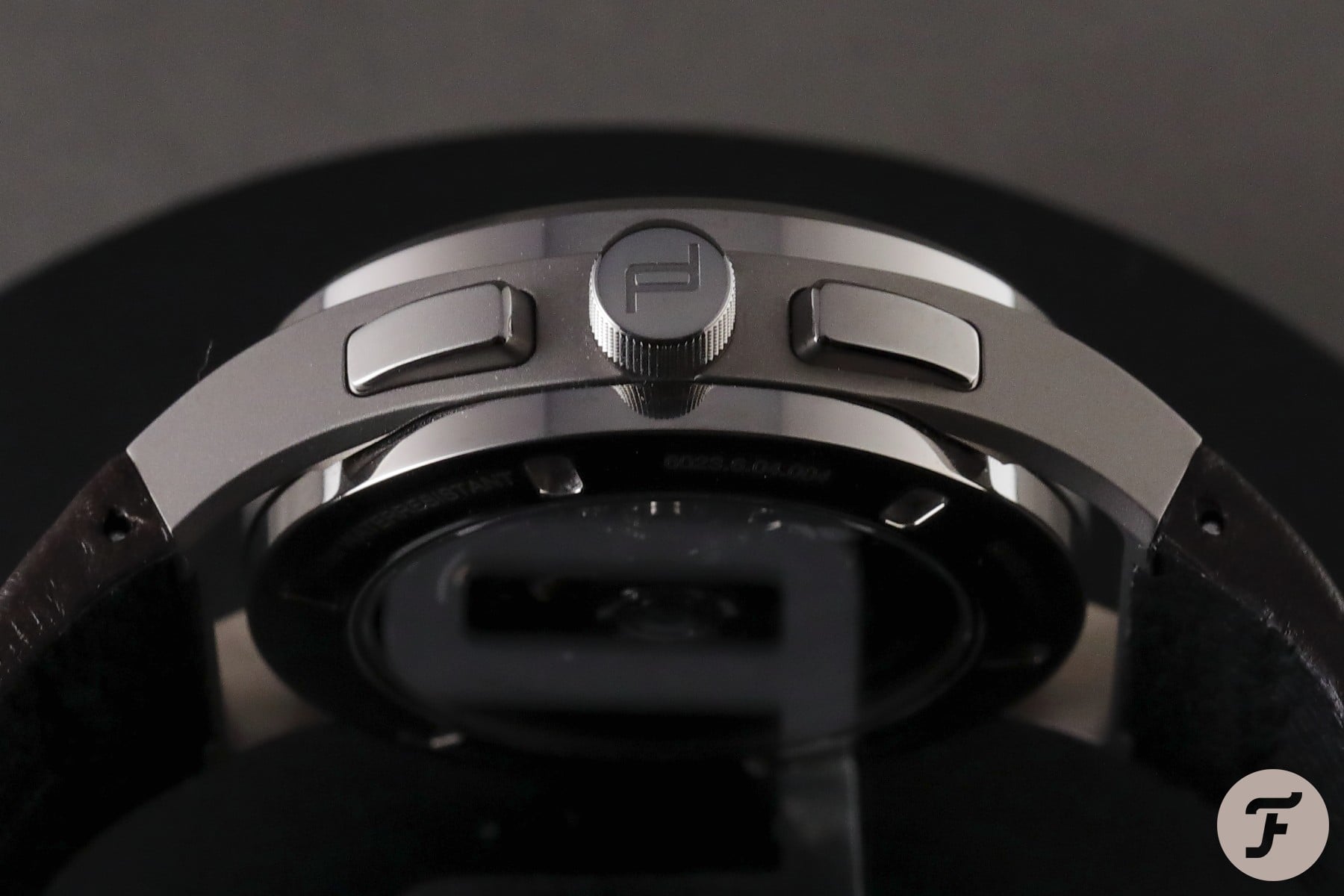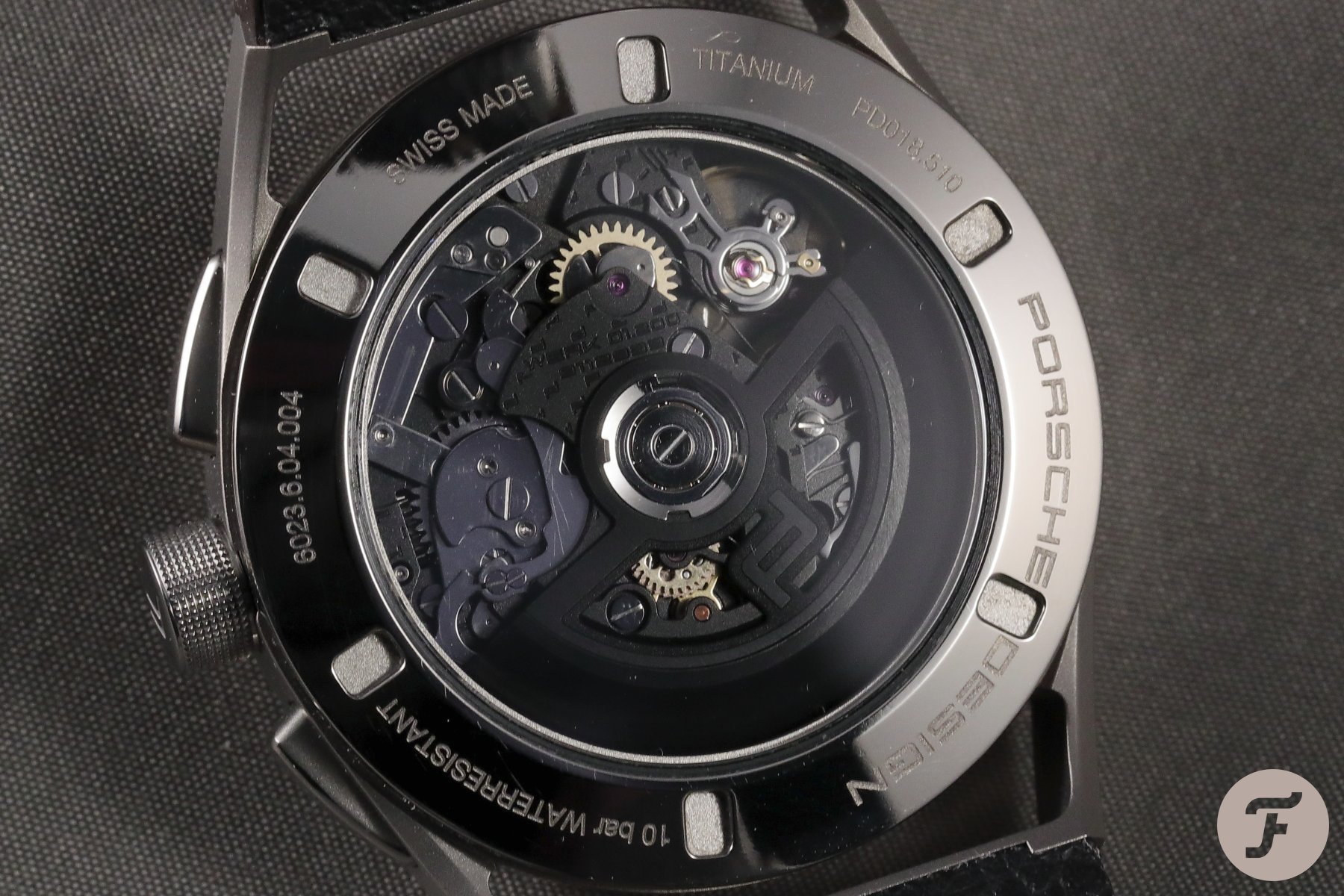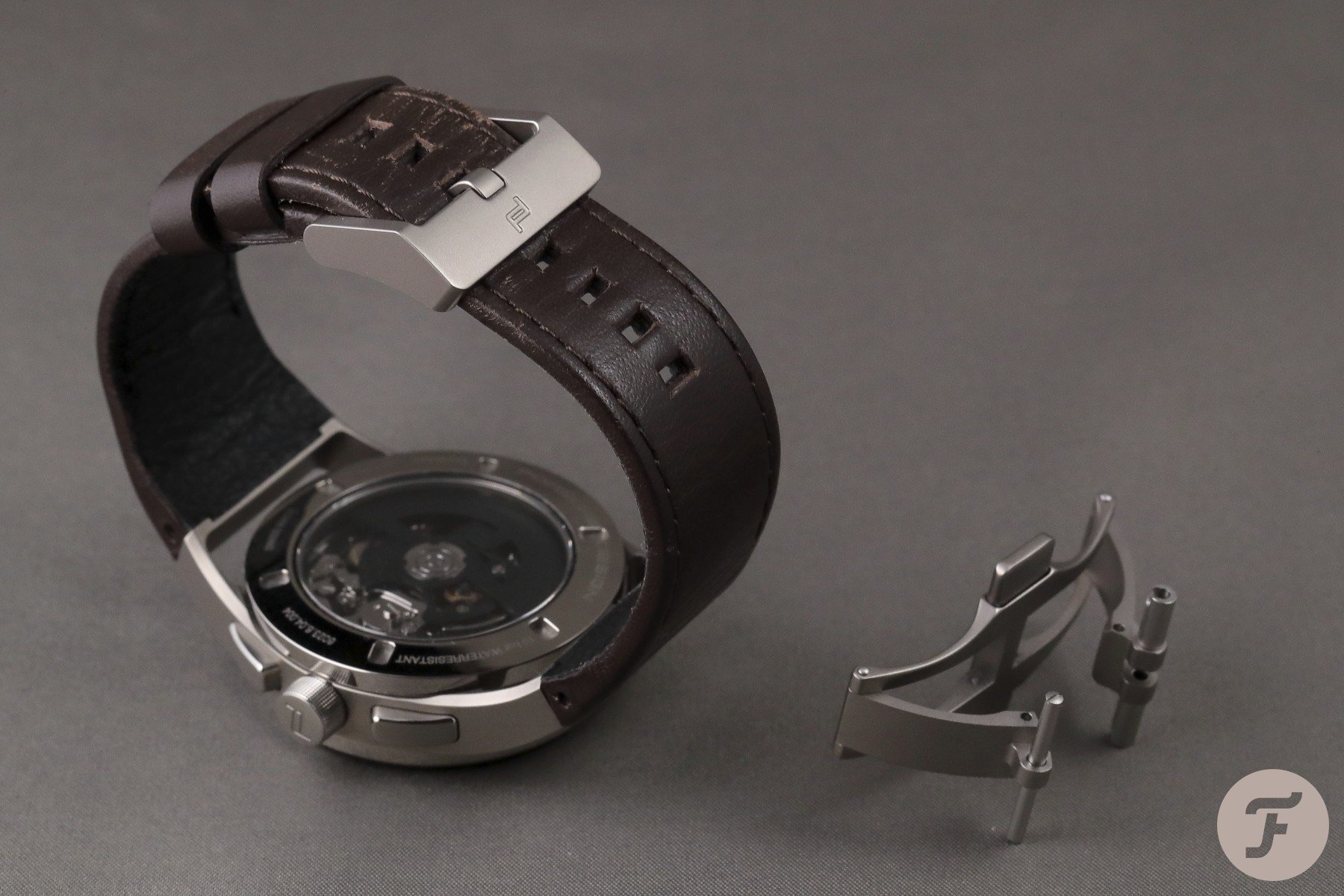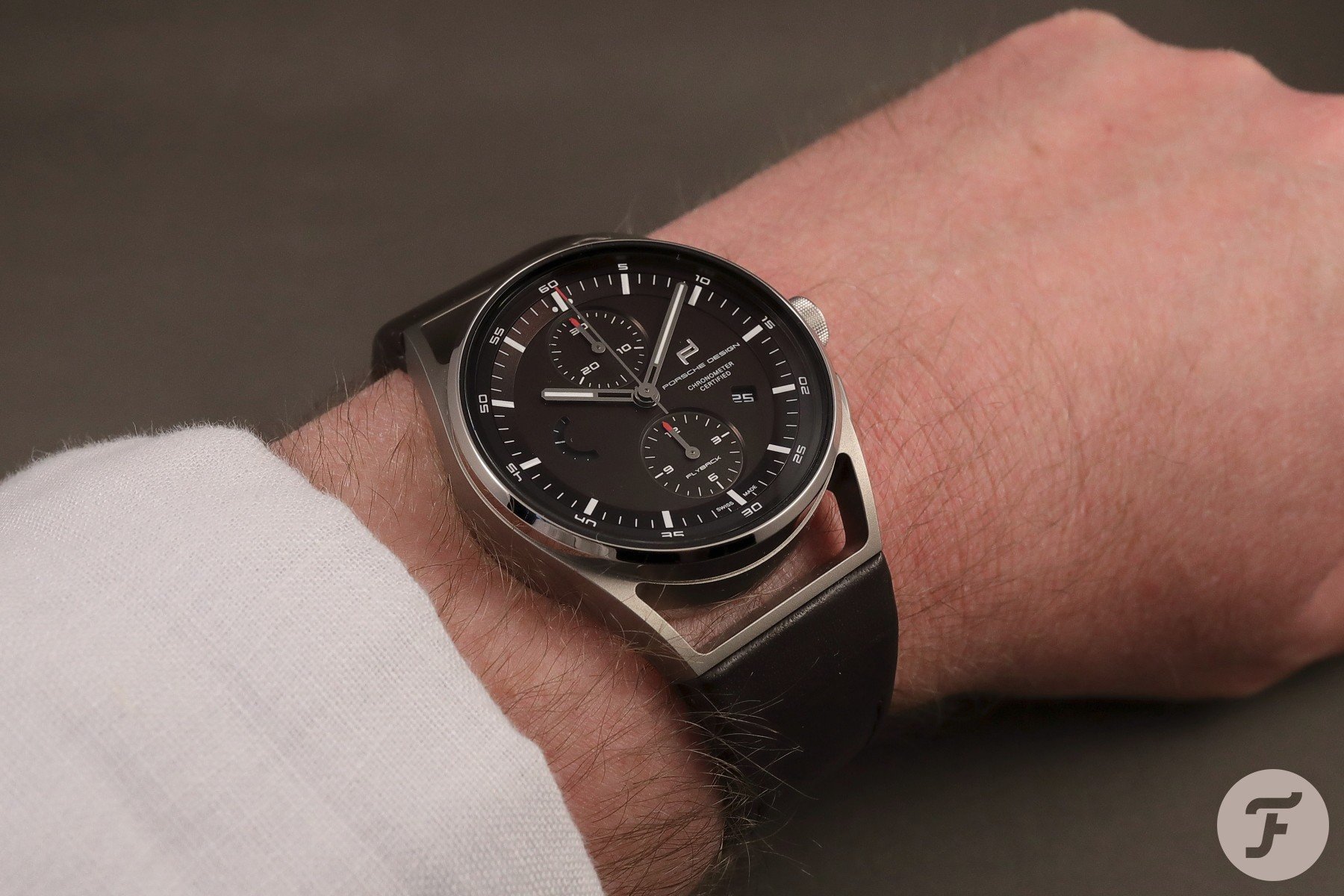Porsche Design 1919 Chronotimer Flyback Brown & Leather
In 2018 Porsche Design presented a minimalist chronograph in an unusual color, driven by their proprietary flyback caliber.
My interest in Porsche Design was induced by the Porsche Design by IWC Ocean 2000 watch. That model had also been the watch that inspired my more profound interest in mechanical watches. It took a while until that watch found its way into my collection. But that’s another story. Let’s examine the 1919 Chronotimer Flyback Brown & Leather.
A bit of history
The first watch carrying the name Porsche Design had been built by Orfina in 1972. That was the Chronograph 1. The outstanding characteristic of that watch was its color — it was matte black all over. Case, bracelet, and dial were all exhibiting that color, which was quite unusual at that time.
In 1977 the famous collaboration with IWC started. Apart from the Ocean 2000, probably the best-known watch from that era is the Titanium Chronograph. The name already indicates the main characteristic of the watches that resulted from that collaboration: Titanium as material for cases and bracelets. The liaison with IWC ended in 1995.
The same year Porsche Design acquired Eterna, which built Porsche Design watches from then on. Despite the impressive (and impressively expensive) Indicator, a mechanical chronograph with a digital display (numbers instead of hands) of elapsed time, which the brand presented in 2004, it watches from Porsche Design were released less frequently. In 2007 this collaboration resulted in the Worldtimer, a revolutionary practical concept to handle different time zones. This watch already had a case that is quite similar to that of this article’s subject — the 1919 Chronotimer series. From 2010 Eterna produced re-editions of famous early Porsche Design watch models. In 2011 Porsche Design sold Eterna to the Chinese Haidian Group (today named Citychamp Watch & Jewellery Group, who also owns Corum), and the production of Porsche Design watches stopped.
In 2014 Porsche Design finally took the production of watches into its own hands by founding the Porsche Design Timepieces AG with headquarters in Solothurn, Switzerland.
1919 Chronotimer Flyback Brown
The most distinctive feature you notice, when looking at the 1919 Chronotimer Flyback Brown, is the color of the dial. Dark chocolate brown is a hue that you rarely encounter on watches — especially sports chronographs. For Porsche Design — a brand better known for a color scheme mainly consisting of black and titanium — the use of brown is almost a violation of conventions. But, like the popular blue dials, a brown dial creates a lesser contrast than black or white.
…the lugs […] create a technical, futuristic, and lightweight impression – an unmistakable visual appearance.
The second outstanding feature of the 1919 Chronotimer is the lugs. As protruding hollow mounts they visually separate the strap from the case. This creates a technical, futuristic, and lightweight impression — an unmistakable visual appearance. The gaps between case and strap allow for glancing at your wrist, but I didn’t notice this to be distracting.
The next visuals that attract your attention are the bright white indexes and hands. The hour and minute hands are partially hollowed out to integrate the design of the lugs with the display. The combination of bright indexes and a matte dial gives the visual impression of a dashboard. This is intensified by the design of the recessed totalizers that indicate elapsed minutes (at 12 o’clock) and hours (at 6 o’clock). The resemblance to a dashboard is much stronger when the chronograph hands are not reset to their zero position.
Design details
The small second at nine o’clock is reduced to a running indicator. One of the indexes of this indicator is slightly heavier, so that you may use it as a reference to set the time accurately. There is a date window at four o’clock that almost goes unnoticed. The aperture is small, there is no frame, the background is the same color as the dial, and the font is the same as on the rest of the dial. Perfect!
The rectangular chronograph pushers are superbly integrated into the shape of the case. The fact that only one side of these pushers protrudes from the case does not impact usability. The sturdy, knurled screw-down crown completes the sporty aspect of the watch. The middle part of the case is glass bead-blasted, while the top and bottom pieces are polished. Notice the nuanced visual effect created by the polished edges of the chronograph pushers. A crystal in the case bottom reveals the movement.
WERK 01
Even to me, being German, the name of the caliber in the 1919 Chronotimer Flyback Brown & Leather appears extremely Teutonic. But, considering the fact that this is the first own movement from Porsche Design after offering watches for almost 50 years, it probably is a proper name. To be exact, it is WERK 01.200.
This movement was first presented as the driving force within the Chronotimer 911 Turbo S Exclusive Series. That watch was exclusively offered to owners of the car carrying the same name — a rather exclusive watch indeed. Next, the WERK 01.200 appeared in the Chronotimer Flyback Special Edition. The 1919 Chronotimer Flyback Brown & Leather has been the third model to contain this movement.
Porsche Design still is a design studio and no watch manufacture. The movement is built by Concepto Watch Factory, which is located in La Chaux-de-Fonds. Porsche Design was heavily involved in the design, and that is clear to see. There are a lot of black surfaces visible through the display back of the Chronotimer. These are covered with matte black coating and are strewn with miniature Porsche Design logos.
A closer look at the WERK 01.200
The most salient part of this movement is the black rotor that carries an oscillating weight made of tungsten. Tungsten is a material rarely used in watch movements. Machining tungsten is a bit complicated, because it has the highest melting point of all chemical elements, and tungsten swarf easily catches fire. But tungsten is heavy (almost as heavy as gold), which is obviously the most essential characteristic of an oscillating weight. Additionally, it is relatively cheap.
The layout of this movement is intentionally similar to that of the ETA 7750. […] When you press the chronograph pushers, you immediately feel that it is not a 7750.
The layout of this movement is intentionally similar to that of the ETA 7750. This way, the WERK 01.200 can easily replace a 7750 in existing watch models should the Swatch Group finally stop providing ETA movements outside the Swatch Group. When you press the chronograph pushers, you immediately feel that it is not a 7750. The pushers have a softer action, similar to a column-wheel-controlled chronograph.
The finishing of the movement parts is rather industrial. There are no traditional decorations, only a simple polish. Regardless, the components are refined enough to warrant a COSC certification.
Strap and clasp
The 1919 Chronotimer Flyback Brown & Leather comes on a dark brown calf leather strap with discreet stitching in the same color. The leather used for this strap is the same as for the seats in Porsche cars. While this might be an exciting feature for fans of Porsche cars, I don’t find it an optimal solution. The leather is a bit too hard to be really comfortable, and this doesn’t change over time. But at least it looks good.
When resting your wrist on a desk or on a chair’s arm, the small area of the folding mechanism squeezes into your wrist. When I wore the Chronotimer at the office, after a short time, it hurt so much that I had to take the watch off.
The strap is closed via a double folding clasp made of titanium that has the same matte surface as the glass bead-blasted parts of the case. Unfortunately, the complete folding clasp is quite thick. The bearing area of the folding mechanism on the inside of the strap is tiny. When resting your wrist on a desk or on a chair’s arm, the small area of the folding mechanism squeezes into your wrist. When I wore the Chronotimer at the office, after a short time, it hurt so much that I had to take the watch off. I never had this kind of problem with any other watch.
I inquired Porsche Design for a pin buckle for this watch. The bad news is: There is no pin buckle. The good news is: You can detach the entire folding mechanism from the folding clasp and attach the remaining buckle directly to the strap as if there had never been any folding mechanism.
Detaching the folding clasp
So I did. But there is a tricky little detail in detaching the folding mechanism. The part that is attached to the strap is held in place by two small pins. Both pins possess screw slots. Only one of these pins can be unscrewed. The other pin is fixed to the folding mechanism. When you try to unscrew the fixed pin with force, you will damage the head of this pin. I tried to unscrew the fixed pin, and I damaged it. Afterward, I realized that you can take off the strap with only one pin removed.
I’d like to have a conversation with the designer who created this folding mechanism.
The point that really annoys me here is that the unscrewable pin suggests a function that doesn’t exist. And this is a design from the company whose credo is, “Form follows function”! I’d like to have a conversation with the designer who created this folding mechanism.
The strap is unusually attached to the case. The edges of the strap meet the lugs flush, instead of sitting between them as with traditional lugs. This creates a different look and contributes a lot to the overall futuristic appearance of the watch. The drawback is that you can only use proprietary straps from Porsche Design. The pins that link the strap to the case are not spring bars. These seem to operate similarly to the kind of pins that connect the links of a bracelet. With standard watchmaking tools, I wasn’t able to detach the strap. This means that you not only can solely attach original Porsche Design straps to the 1919 Chronotimer, you even need this to be done by Porsche Design service.
Conclusion
The 1919 Chronotimer Flyback Brown & Leather exhibits a distinctive design. A successful mix of futuristic, elegant, and sporty aspects, that nonetheless fuse into a restrained overall appearance. In 2019 it won the Red Dot Design Award as “Best of the Best.”
…you can transform it into a pin buckle.
Porsche Design’s proprietary movement is convincing. The chronograph functions operate surprisingly well, and it provides good accuracy. The strap looks good, and, in combination with the signature lugs, it is responsible for the distinctive look of this watch. That said, the leather could be more comfortable. The solution to attach the strap to the lugs could be more consumer-oriented. The folding clasp, even though generally regarded as a more comfortable and secure solution than a pin buckle, in this case, I perceive as unwearable. Fortunately, you can transform it into a pin buckle.
The price 0f about €6,000 I find justified for this distinctively good looking flyback chronograph made of titanium and based on a proprietary movement. To explore the world of Porsche Design, head to the brand’s website.

